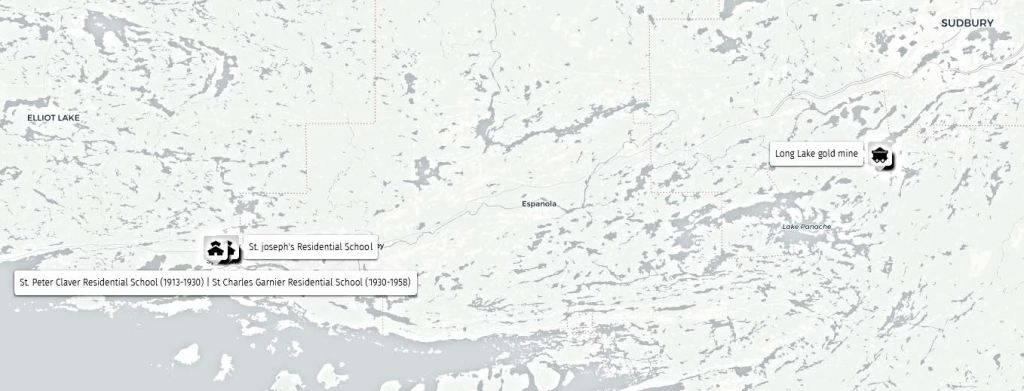Chapter 5 – Reconciliation
Overview
Medicine Wheel Direction – North (White) – Movement/Action/Caring
The teachings of Giiwedinong (the North) are caring, wisdom and action (Nabigon, 2006). Elders are represented in the northern direction. Elders are respected for their life history, experiences and wisdom and have reached a point in their lives where they are able to share their gifts and knowledge with others.
As we move around the circle to the north, we discuss the action taken by Indigenous and non-Indigenous peoples that lead to reconciliation. This chapter begins with two case studies: the Union of Ontario Indians (UOI) and the Ministry of Northern Development, Mines and Forestry (MNDMF) regional consultations on regulations to implement the Modernized Mining Act, and the Council of Canadians – Sudbury Chapter supporting Atikameksheng Anishnawbek First Nation in dealing with the issue of arsenic in their water systems. Although we have been using the broad term Indigenous throughout this open textbook, the term used in this section with be First Nations simply because that is the group of people being referred to in the case study.
The next section of this chapter deals with reconciliation of the residential school experience. We will look at the role of the Truth and Reconciliation Commission, the response by the United Church of Canada, a youth perspective on reconciliation, and the commitment from the Ontario provincial government with respect to reconciliation. The last section of this chapter explores two examples that foster transformative change within the health care system. These examples of transformative change demonstrate how Indigenous people use their influence to challenge institutional racism and discrimination and use Indigenous health information data to enhance well-being of their people.
Indigenous peoples have been working at reconciliation since the arrival of the first settlers to this country. This chapter encourages reflection on understanding colonial history, consideration of the services and programs that have developed in response to that history, knowledge of cultural teachings, healing practices and ways of knowing and being, and how to incorporate this new understanding into some action that can lead to reconciliation. In other words, how do we move forward? What lies in the future? What new initiatives can be developed that help with the braiding of Indigenous and Western Approaches?
Learning Outcomes
When you have worked through the material in this chapter, you will be able to do the following:
- Describe changes in your knowledge base and give examples of stories which have surprised or moved you.
- Discuss how you can be a part of moving toward reconciliation.
- Outline a plan for how you can help to braid Indigenous and Western approaches on a small scale.
Geographical Setting and sources of information
The image below is a snapshot of the locations mentioned in this chapter.
Click on the image of the map below for a more detailed geographic context.


